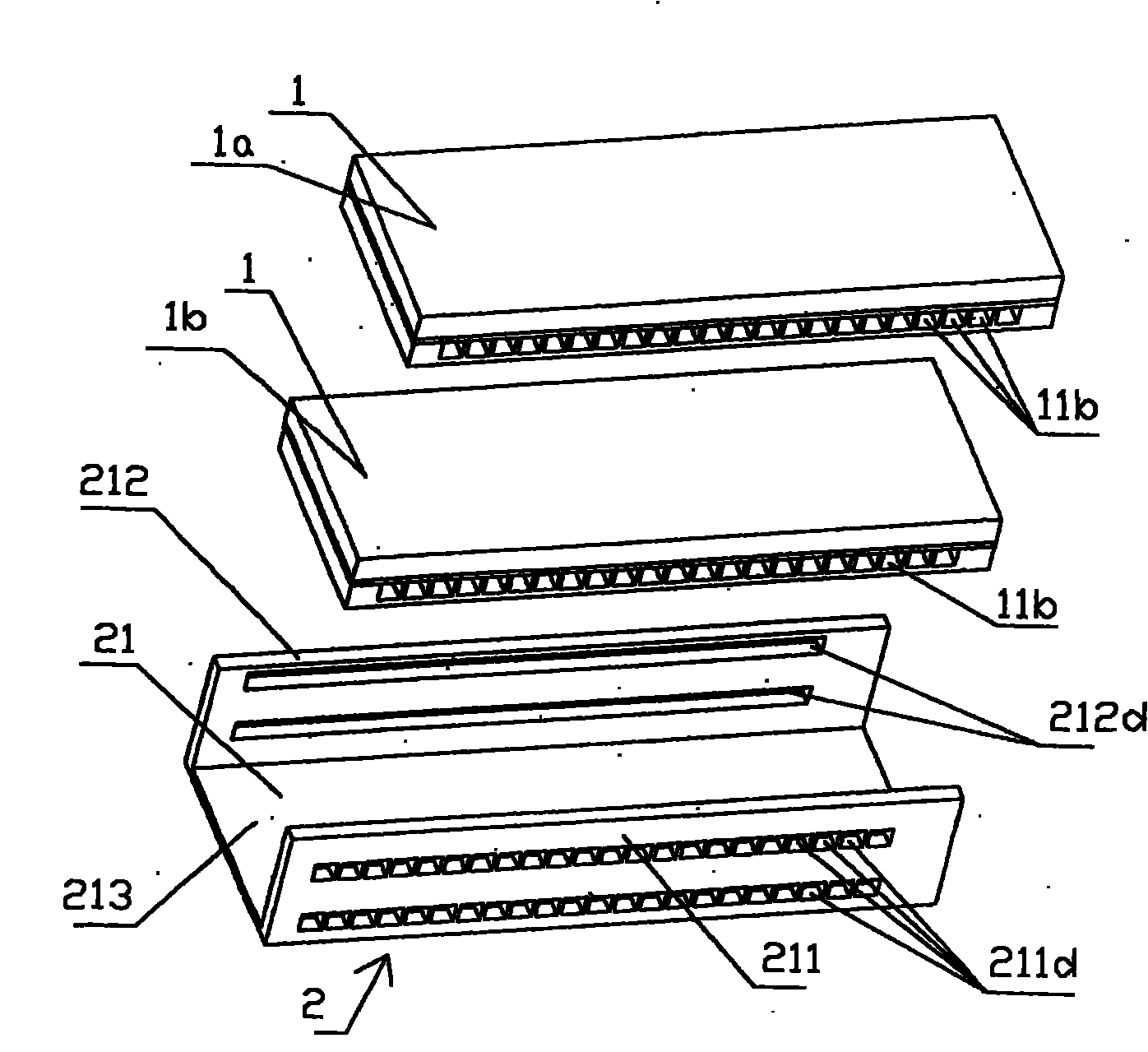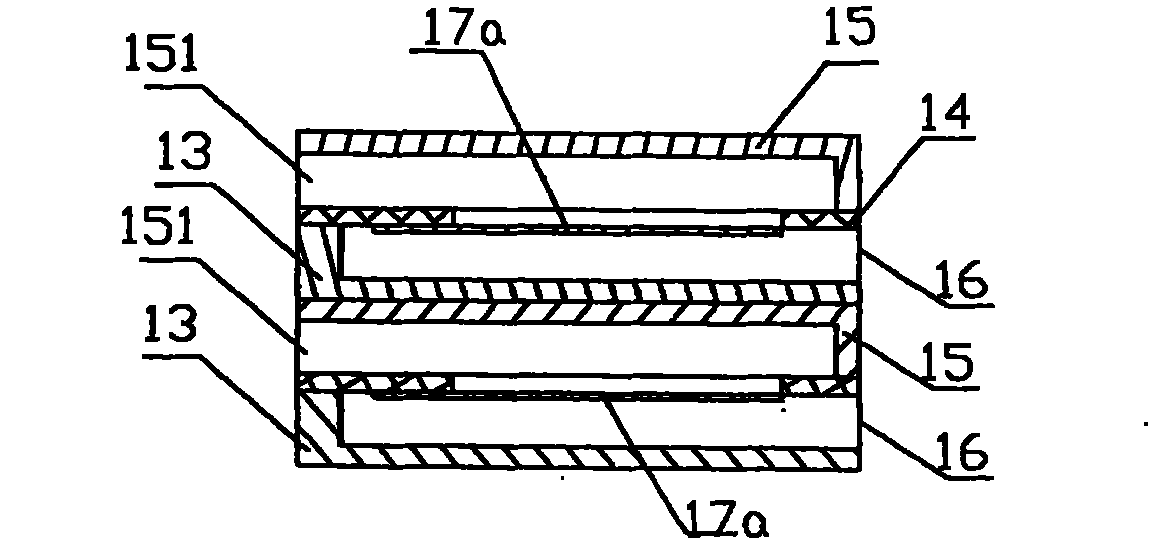Mouth organ
A harmonica and suction body technology, applied in the field of musical instruments, can solve problems such as unsightly appearance, unreliable tightening force of rubber bands, and no sound from reeds.
- Summary
- Abstract
- Description
- Claims
- Application Information
AI Technical Summary
Problems solved by technology
Method used
Image
Examples
Embodiment 1
[0110] Embodiment one: if figure 1 As shown, a harmonica described in this embodiment includes an upper blowing and sucking body 1a, a lower blowing and sucking body 1b, and also includes a blowing and sucking body containing structure, and the blowing and sucking body containing structure at least includes a front containing surface structure and a rear The structure of the containing surface; the upper blowing body and the lower blowing body are superimposed and placed in the containing structure of the blowing body, wherein, the front faces of the upper blowing body and the lower blowing body are opposite to the front containing surface structure, and the upper The back of the blowing body and the lower blowing body are opposite to the rear housing surface structure; the front housing surface structure is provided with an air flow that is opposite to the front of the airflow channel of the upper blowing body and the lower blowing body. The front conduction structure, the r...
Embodiment 2
[0119] Embodiment two: if Image 6As shown, the front groove wall 211 of the harmonica in this embodiment is provided with a voicing slider 3 in front, and the frame seat 2 is provided with a positioning opening 31 of the voicing slider 3 that can make the voicing slider 3 Positioner 6 for movement and reset. This locator 6 can be called the phonogram slider locator 6 . The positioning part 6 of this embodiment is a torsion spring 61, and the torsion spring 61 is sleeved on the cylindrical support 24. The end wire 611 at one end of the torsion spring 61 leans against a supporting wall 25, and the end wire 612 at the other end leans against the other end. On the support wall 26, the head of the end wire 612 at the other end is inserted in the positioning opening 31 of the sound changing slider. The hand pushes or moves the end of the phonogram slider 3, and the phonogram slider 3 starts to move. When the phonogram slider 3 moves a distance of one syllable 131 (this specificat...
Embodiment 3
[0127] Embodiment three: as Figure 12 As shown, the front groove wall 211 of the harmonica in this embodiment is provided with a voicing slider 3 in front, and the frame seat 2 is provided with a positioning opening 31 of the voicing slider 3 that can make the voicing slider 3 Positioner 6 for movement and reset. In this embodiment, the positioning member 6 is a rigid pin 62, and the pin 62 is arranged in the moving member 63, and can be clamped and fixed by both the moving member 63 and the small splint 64 as shown in the figure. The moving part 63 is provided with an elastic return mechanism 65 (here is a spring, and is a stage clip), the moving part 63 moves in the groove 28, and the upper small cover 72 is above the moving part 63 (not shown), preventing the moving part 63 from breaking away from the groove . The hand pushes or moves the end of the sound-changing slider 3, and the sound-changing slider 3 begins to move, and the sound-changing slider drives the pin 62 an...
PUM
 Login to View More
Login to View More Abstract
Description
Claims
Application Information
 Login to View More
Login to View More - R&D
- Intellectual Property
- Life Sciences
- Materials
- Tech Scout
- Unparalleled Data Quality
- Higher Quality Content
- 60% Fewer Hallucinations
Browse by: Latest US Patents, China's latest patents, Technical Efficacy Thesaurus, Application Domain, Technology Topic, Popular Technical Reports.
© 2025 PatSnap. All rights reserved.Legal|Privacy policy|Modern Slavery Act Transparency Statement|Sitemap|About US| Contact US: help@patsnap.com



